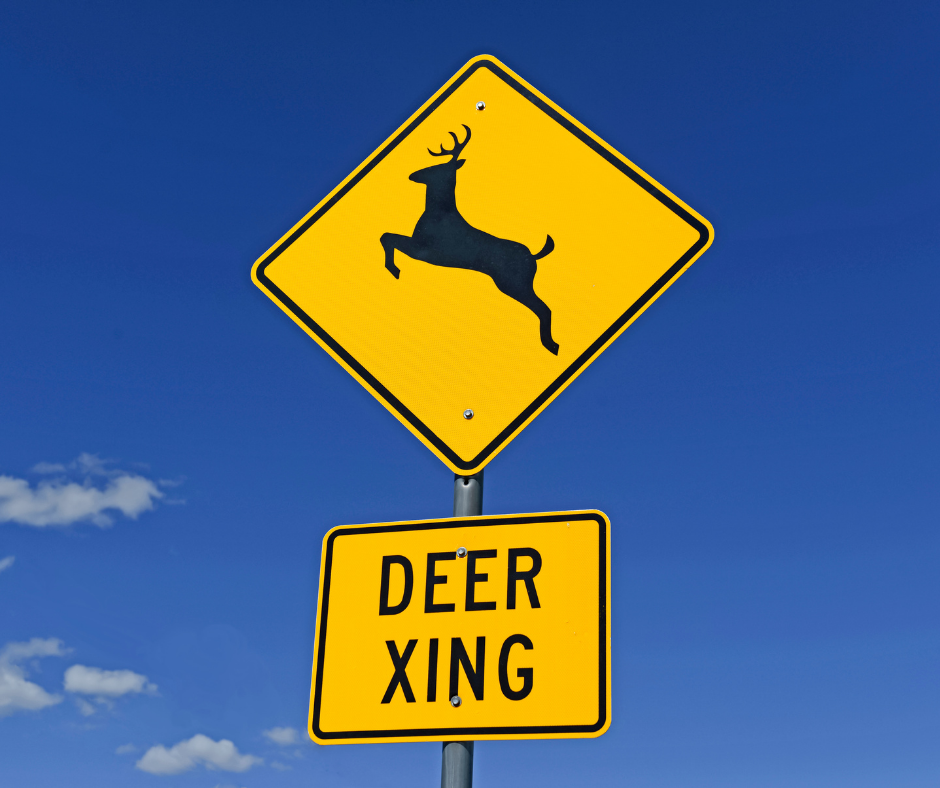
By Tabitha Evans Moore | Editor & Publisher
It’s around dusk on a random Thursday. I’m driving along Highway 50 near the Moore County, Franklin County line when out of nowhere a deer darts from the right tree line and in front of my car. I don’t swerve. I take my foot off the gas and hope for the best. I’m a country girl, so I know where there’s one, there’s bound to be several, so I scan the roadside. At this time of day and with the green of summer fading to a dingy brown, they aren’t easy to spot.
According to state safety officials, there are nearly 8,000 deer-related crashes each year in our state and Tennessee ranks 32 in states where you are most likely to be involved in a deer-vehicle collision.
With so much of Moore County existing along rural, narrow, tree-lined roads, it pays to be extra careful this time of year to avoid collisions with deer. It’s deer mating season, which mean the critter are distracted and on the move. Mating season for much of Tennessee’s watchable wildlife happens October through December and animals crossing locals roads include deer, raccoons, skunks, and even the random cow.
According to the state, damage to a vehicle from a collision with an animal is covered under an auto policy’s optional comprehensive coverage. If you only have collision coverage or liability coverage, your insurance carrier will not cover damage to your vehicle resulting from a collision with an animal.
The NHSA estimates damage caused by deer accidents alone result in more than $1 billion in annual insured losses. To make sure your vehicle is covered for animal collisions, contact your agent or carrier to discuss adding comprehensive coverage to your policy. Filing a claim for an accident covered by your comprehensive coverage means you’ll still need to pay a deductible. After that, your insurer will cover the costs of the claim up to your policy limits.
There are some simple steps you can take to avoid an accident:
1| If you see one deer, you should expects others to be nearby. Slow down.
2 | Deer signs are placed at known deer-crossing areas. Pay attention and reduce your speed when you see these signs.
3| From sunset to midnight and shortly before and after sunrise are the most common times for deer travel.
4 | Make sure your headlights are in working order to improve your night vision. Using high beams can help spot wildlife, but be considerate of other drivers when using them.
5| Stay focused while driving. Do not text, talk on your phone or allow passengers to distract you.
6| Never swerve to miss a deer. Stay in your lane. Many serious crashes occur when drivers swerve to avoid a deer and hit another vehicle or lose control of their cars. Simply brake firmly and bring your vehicle to a controlled stop.
7| Do not attempt to move an injured or dead deer from the roadway. Deer can inflict serious injuries.
Tennessee law allows deer killed in a collision to be taken and used as food, as long as you contact the nearest Tennessee Wildlife Resources Agency (TWRA) regional office and report the accident within 48 hours. Moore County exists in Region 2 District 22 and may be reached by phone at 615-781-6622 or 800-624-7406. •
{The Lynchburg Times is an independently owned and operated newspaper that publishes new stories every morning. Covering Metro Moore County government, Jack Daniel’s Distillery, Nearest Green Distillery, Tims Ford State Park, Motlow State Community College, Moore County High School, Moore County Middle School, Lynchburg Elementary, Raider Sports, plus regional and state news.}
